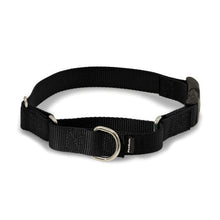7 Steps To Improve Your Dogs Confidence

When you got your German shepherd, you most likely had visions of raising a brave dog that was ready to take on the world and go everywhere with you.
You planned to train your new best friend, go on lots of adventures, and perhaps even get involved in dog sports or a club where you could meet other German shepherd owners.
But maybe things aren’t working out as planned. Your dog isn’t as self-assured as you hoped and may even be timid or shy when faced with new situations. They may bark at strangers or other dogs and balk when faced with new experiences.

You begin to wonder if this is your dog’s personality, a behavior problem, if the dog is having trouble getting over a bad experience, or if they could even be aggressive. You want to fix what is wrong but may not be sure what the problem is.
Identifying the problem is important to solve it. It’s crucial to distinguish between a lack of confidence, fear, and aggression. True aggression is rare in dogs and if you think your dog is truly aggressive, you should consult with an experienced trainer or behaviorist but rest assured that is most likely not the case.
It’s much more likely that your pup just needs some help building their confidence so they’re less fearful or uncertain of how to behave when faced with new experiences and people. Dogs that lack confidence will often get anxious and may perform one or more of these behaviors when they are uncomfortable:
• Hide
• Avoid
• Cower
• Try to look small
• Pant
• Drool
• Bark
• Lunge
• Freeze
• Tuck or hold their tail unusually low
• Urinate
• Yawn
• Rapidly lick lips
• Avoid eye contact
• Show whites of their eyes

Helping your dog to become more confident will take some work but will be so worth it. Not only will it increase your dog’s trust in you, but your dog will also be much happier and easier to take to new places and introduce to new people.
Some ways to help boost your dog’s confidence include:
1. Set them up for success
Start by exposing your dog to new situations that are less threatening to them. For example, if your dog is nervous at a busy park filled with loud people and other animals, take them to a quiet park where they can explore with a relaxed state of mind.
Make the experience as pleasant and fun as possible. Let them explore with their nose, watch what’s going on around them, give them an opportunity to feel great about their new adventure, and give them lots of praise, treats, or play rewards for positive behavior.

As they get used to the comfortable environment, gradually introduce them to different places then build up to busier environments as they are ready. In this way, you’re avoiding the trigger of the problem behavior while letting them know there is nothing to be worried about, outings are meant to be fun.
2. Obedience Training
Training involves much more than creating an obedient dog that does your bidding on command. It also builds trust and improves the communication you have with your pet, which will help you lead them through each new situation they face in life.
When they focus on you and understand what you expect of them, they are much more confident, even in fearful situations because their attention is on you and they trust you to keep them safe and show them what you want them to do.

This is especially true when going to new places where they have to behave a certain way or at the vet. A dog that has been trained to place, have their paws, ears, and mouth handled, sit, stay, lay down, and quiet are easier to handle when they are stressed, sick, or injured, and can go just about anywhere dogs are welcome.
Knowing what is expected is a huge stress reducer and makes new experiences much more pleasant. It helps them to look forward to and accept other new experiences because of the positive association they have with their last adventure because their stress was kept to a minimum.
3. Introducing them to new people
Some people are afraid if they introduce their German shepherd to people that they won’t grow up to be protective dogs. This is not true, it actually can create a fearful dog that is weary of strangers.
While your German shepherd doesn’t have to greet every person they pass on the street, it is important for them to know how to act toward strangers and to be able to greet people calmly, without fear.
Confident dogs are not aggressive when meeting new people. It is important to ensure their interactions with new people are positive. You can do this by introducing them to people you know at your home and out and about.

As they learn how to calmly greet new people, you can begin taking them to places where there will be strangers. This is not to say you should allow all strangers to walk up and pet your dog, absolutely not.
But by teaching them that being around new people is a positive experience will enable you to take your dog with you without worrying that they will bark, bite, or snap at someone. You should always be in control of who your dog interacts with but able to trust your dog if a stranger gets near.
Your dog should also be exposed to all types, shapes, sizes, colors, and ages of people. They need to know that people running, playing, riding bikes, etc. are okay and that barking, chasing, and lunging are not allowed.
4. Training them not to react to other dogs
Some dogs love other dogs and some dogs don’t. It’s up to you if your dog will be allowed to go to the dog park or engage with other dog friends. However, dogs that are confident when they see or get near another dog are more relaxed and self-assured.

Your dog’s personality should be taken into account when it comes to other dogs and strange dogs should never be forced on them (one reason is that you have no control over what the strange dog will do and you want to avoid negative encounters).
However, by exposing your dog to other dogs in a controlled environment from the time they are a puppy will help them look at other dogs as part of everyday life, just like strange people, cars on the road, and new places.
5. Desensitization
If your dog has a fear and acts out when it sees something specific, desensitization is a great confidence booster. It can help them associate something that they react to with something good so they are more confident around it.
How it works is by rewarding them for not reacting negatively to something. For example, let’s say your dog is afraid of the vacuum. One way to overcome their fear is to allow the vacuum in the house but give them plenty of space away from the vacuum so they get used to it and see there’s nothing to be scared of.

Then as they ignore it, eventually have them get closer and closer by rewarding them with lots of praise and treats when they are in the same room with the vacuum until they are no longer bothered by being near it.
Then, you’ll begin to expose them to moving the vacuum without the power on and reward them for not being scared until eventually, you can turn the power on (from another room far from them) while rewarding them for being calm until finally, you can vacuum the house without much reaction.
Notice, you start the process with very low intensity and expose the dog at small intervals so they don’t display any fearful behaviors or react to the object. You slowly increase the exposure until it’s no longer a problem.
6. Counterconditioning
Similar to desensitization, counterconditioning helps increase your dog’s confidence by getting them used to something that they react to little by little and then training them to display a more desirable reaction rather than their current reaction.
So, if your dog barks like crazy at the vacuum, the purpose is to teach them to be quiet when the vacuum is on by giving them lots of praise and treats when they are quiet for you (of course, they have to learn the quiet command first).

Counterconditioning uses positive reinforcement to mark and reward their new behavior until it replaces their old behavior. It takes time because you have to go slow with this type of training so that you can identify and stop the behavior the moment it happens and then immediately reward them for stopping their old habit.
In other words, does the dog start barking when they see the vacuum, when its plugged in, when they see your finger turn on the power switch, or when they hear the engine roar to life-in this type of training you have to be fast and interrupt their current reaction so that they stop just as it begins and then immediately reward them for their obedience.
Just like desensitization, take counterconditioning slow and gentle, it should never be forceful. Always watch the dog for signs of distress, anxiety, and stress so that it is a positive experience rather than a correction or punishment, which will create more fear.
7. Socialization
Socializing your dog with people and other dogs is important but it also includes exposing puppies to new situations, places, and activities. You should start socializing your puppy as soon as you bring them home (and it’s safe to do so after their vaccines).
This will help them mature into confident dogs that are able to enjoy their life to the fullest and help avoid fears and low self-esteem from developing in the first place. Socializing them will also build trust and strengthen the bond you share with them.

Before you bring your puppy home, come up with a plan about how and when you’ll expose them to new things in the house, the yard, when and where you’ll take them on outings, for training, playtime, games, and more.
Be sure to reward their positive behaviors with lots of praise and treats and begin basic puppy training at this time, too. This special time is the foundation for which your entire relationship is built and their confident-filled future starts.
We hope you enjoyed this article and it helps you and your German shepherd to share an amazing relationship. As always, please feel free to share with your friends.
You may also like: 5 Things You Should Never Do To Your Dog
























